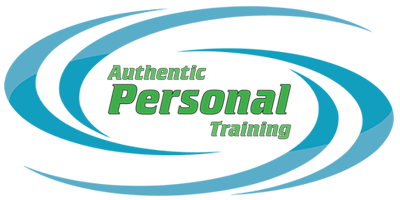THE IMPORTANCE OF MOBILITY AND END OF RANGE STRENGTH
There is a great level of importance when it comes to mobility and end of range strength. As we all know, consistent exercise is crucial if we are to lead healthy happy lives. As well as being consistent, there is importance in the types of exercise we complete each week.
Too often, we see people focusing on only 1 form of exercise and the body is not afforded a well-rounded approach to conditioning. Performing a good variety of exercises is vital to having a body that moves well. So yes, we need some sort of resistance training in our weekly schedule for strength. However we also need exercises that will increase our heart rate for cardiovascular fitness.
But, just as important as these two areas (strength and cardio) we need to make sure our bodies are moving at an optimal level through full ranges of motion while being free of pain.
Let’s take a deeper dive into mobility and strength, what they are and look at their importance.
WHAT IS MOBILITY?
Mobility is the ability to move freely through deep ranges of motion without pain or extra stress. Good mobility tends to lead to wider ranges of movement (think a really deep squat or upward dog in yoga), a decreased feeling of stiffness and fewer injuries. Mobility tends to be overlooked a bit as the traditional way of thinking has always leaned towards flexibility. However, the importance of mobility (and the strength) that comes from it, cannot be overlooked.
MOBILITY Vs FLEXIBILITY
Mobility and flexibility are different but work together.
Mobility is more joint focused and flexibility is more about length of muscles or muscle groups. The other key difference is that mobility is moving actively through range of motion while flexibility is moving passively through range of motion.
For example, achieving a deep squat is more mobility focused whereas touching your toes is more about flexibility. However, they do work together (as most things in the body do!). Yes, touching your toes requires good flexibility especially in the hamstrings, but you also need to have good mobility around your knees, hips and lower back.
So even with nice long flexible hamstrings, if you have poor mobility around your hips, your toes might still be out of reach!
Mobility also often requires a good amount of flexibility, so both are required to be trained.
HYPERMOBILITY
While many people battle stiffness and shortness in range of motion, some are genetically hypermobile. This means they have the ability to move their joints beyond the normal range of motion.
For those with hypermobility, mobility training is still important!
Why?
Because they need to strengthen and ready their joints in those deep, end range positions. We want the body prepared and able to cope with a movement that might put them at the end of their range without getting injured.
This is also where end of range strength becomes crucial, more on that later.
WHY SHOULD IT BE A PART OF MY EXERCISE ROUTINE?
Moving pain free should be a goal for everybody. Along with this we ideally would like to be able to move strongly through complete ranges of motion to avoid injury. This also allows us to perform at an optimal level.
When I say perform, I’m not talking about elite athletes. I mean performing day to day tasks like picking up groceries, changing light bulbs or playing with your kids.
We also need good mobility as we age, thinking about longevity in terms of how we move our body is great motivation!
The stronger and more mobile we are now, the better off physically we’ll be the older we get.
HOW DO I TRAIN FOR MOBILITY?
Mobility can be trained by dedicating an entire session or two a week towards it. This should certainly be the case if your goal is to increase range of motion, decrease stiffness or if you are rehabilitating after injury.
However, mobility can be added into other sessions as well.
For example if you are doing a strength session and you are including rest periods between heavy sets. This is a great time to include a mobility exercise.
As an example one of your sets may look like this….
- Front squat 5x60kg
- Thoracic extension 3x10sec holds
- Rest 30s
- X4
So initially the rest may have been set at 1 minute but you’re using half that time to do a mobility exercise. This is good for the body generally but also excellent for that particular strength exercise.
You can also add mobility into warm ups and cool downs before or after cardio or strength sessions.
Mobility is in fact a great way to warm the body up and ready it for strenuous exercise. Mobility also activates large and small muscle groups so you’re less likely to get injured during a session if mobility has been included in the warm up.
END OF RANGE STRENGTH – WHAT IS IT?
End of range strength refers to the exertion of force when a muscle is at its longest or shortest.
Think about raising your leg in front of you as high as you can, you’ll reach a point where you cannot lift any higher no matter how hard you try. This is your end of range and the point where your active mobility ends.
You reach this end point in part because the antagonist muscle does not have enough flexibility but also because of a lack of strength in the working muscles at that range.
If in this position you put your hand on your leg and try to push up you’ll find that it is extremely difficult to create any power. This is because the muscle is at its weakest whilst at its longest (or shortest.)
THE IMPORTANCE OF END OF RANGE STRENGTH
Being able to create more strength (more power) in these end range positions is going to allow for greater range of motion.
I.e. improved mobility, improved overall muscular strength and decreased risk of injury. It is extremely important to train for strength at these end range points. When put into these positions, the body should have the strength to cope with the demand.
This is especially true for those people who are hypermobile.
If you think of an elite gymnast. They are not only putting their bodies into full range of motion, they are then asking their body to exert force in that end range position. Over and over again!
Gymnasts who are hypermobile, have the strength to be in these end range positions without risk of injury because they have trained for it.
HOW DO I TRAIN FOR END RANGE STRENGTH?
Add it into your mobility and flexibility exercises.
For example, if you are stretching the quads (front of thigh) in a half kneeling position, put extra demand on the quadriceps by lifting the knee just off the ground. By doing this, you are stretching the quadriceps by making them lengthen and then asking them to produce force/strength by adding the lift whilst the muscles are in a lengthened position.
This can be done in many end range positions.
Often the contraction doesn’t have to include a visible movement. It could just be a ‘squeeze’ of the muscle.
An example of this would be if you were sitting on the floor with your legs out straight and tried to lift your leg whilst keeping it dead straight.
You might get movement off the floor, you might not. Either way with the intention to get lift there is still a contraction and thus an exertion of force.
This is end of range strength at play!
SUMMARY
There are many ways we can train our bodies. Training for strength, cardio, mobility and flexibility are all vital components to exercise prescription. There is however, a great importance in training for mobility and end of range strength.
If we can hit every one of these training modalities every week we’re in a good place!
Obviously more focus can be where it needs to be depending on our goals. But, even if the goal is to run a marathon or to be able to squat your bodyweight, mobility and end of range strength are going to play a big role in the success of reaching that goal. They are not to be underestimated!
If you feel you would like some more specific help in this area, please reach out to us at Authentic Personal Training. We can guide you through how to perform and incorporate mobility and end of range strength into your exercise routine.
Want To Learn More?
Since COVID-19 entered our lives, we have aimed to deliver some great weekly information as to how you can remain healthy, productive and in good spirits. This blog post is the latest addition to a growing library of information. Click to read more on our dedicated COVID support blogs.
Over the last 5 years Authentic Personal Training has established itself as a leading health and fitness studio on the Lower North Shore. We are incredibly proud to announce that we have been voted The Best Fitness Business on The North Shore for 2019.
Join us on our Facebook page:
To book a complimentary Personal Training Session with one of Sydney’s most experienced Personal Trainers, simply fill out the form below



